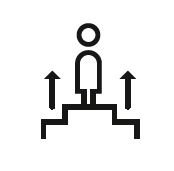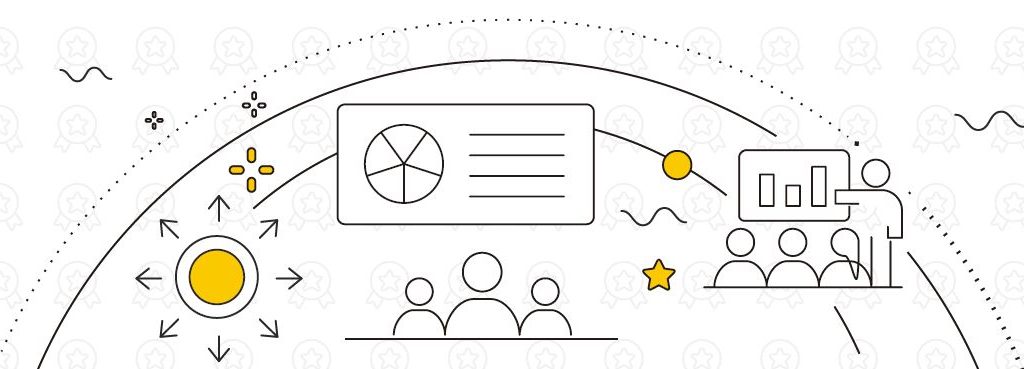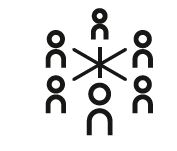The absence of accidents or a very low accident rate has traditionally been regarded as a sign of a successful corporate Health, Safety and Wellbeing strategy. It was believed that the systems and processes functioned effectively if nothing adverse happened and, if anything did go wrong, the focus was always on finding the cause, which was generally linked to “human error”. This thinking led to the idea that the environments were safe as long as colleagues performed the procedures properly and, therefore, what needed to be corrected was human behavior.

Unfortunately, in the present day we continue to see serious workplace accidents in industries of all types around the world. Some of them are attributable to the human factor, but others are linked to automation, reinforcing the idea that the traditional approach needs to change with the times. In the infrastructure industry, we are seeing a growing gap between how we think the work is done and how it is actually done.
RESILIENCE

We now know that this difference is inevitable; sometimes things go wrong, so it is necessary to consider the possibility of failure and factor it into the pertinent management approaches. Here, resilience plays a vital role in helping us go one step beyond the conventional approach towards one that enables us to address any situation, no matter how unexpected.
In 2011, prestigious Danish psychologist Erik Hollnagel defined resilience as the intrinsic capacity of a system to adjust its functioning prior to, during, or following changes or disturbances and thereby sustain normal operations notwithstanding the circumstances. High-performing companies fit that description exactly. They have the ability to recover, with good Health, Safety and Wellbeing systems and processes.
It is precisely this structure that enables them to be more resilient in the face of incidents and accidents, and to respond to any eventuality. Although resilience is not a new idea, it has become increasingly important in the field of workplace Health, Safety and Wellbeing.
Asking whether a company has the right approach to anticipating possible future events; whether there is real engagement of colleagues from different business units, functions or teams in discussing safety trends and how processes have changed; being aware of the company’s capacity to learn from past situations, and the extent to which it has taken on board the lessons that have been learned — these are some of the key factors for achieving the much sought-after resilience.
Far from continuing to work as we have up to now, which has resulted in our current culture, the goal is to move forward in the area of Health, Safety and Wellbeing. This evolution in resilience serves to further underpin our existing knowledge of methods and techniques as we improve them. We can only move forward if we understand our day-to-day operations and how to respond to things that would otherwise be invisible to us.
COMPETENCY

To ensure that this culture is maximally effective, it’s also necessary to guarantee that the employees, the ones bearing the responsibility, have everything they need to do the job. This is especially important for those colleagues who are critical for creating safe and healthy workplaces.
In order for an employer to fulfil its legal and ethical responsibilities to its colleagues and the outsourced workers that make it possible to work safely, it is vital to have a workforce with the requisite skills.
In a context like the one in which the construction industry now operates, with an ageing population, it is particularly important to encourage workers to stay in shape, not just physically but also mentally, in order to be able to do their job. Providing teams with continuous training not only gives good results in this situation but is also a way to attract young talent. It’s important that young colleagues see career prospects for themselves in a fair, safe environment.

Ferrovial recently identified a set of best practices for providing a more structured and coherent approach to competency, and it was in this context that the “License to Operate” was conceived, one of the projects that seeks to provide the company with clear benefits in this area.
The goal of this initiative is to identify positions that are critical to safety. Once they have been identified, the colleagues occupying them must have the specific competencies to be able to work on the company’s projects. The license requirements will depend on the country, adopting a tiered approach for all roles and responsibilities, and it will be reviewed annually to support all individuals’ development.
Moreover, it will cover all tiers, from senior management down to managers and team leaders, both in offices and on-site. Site supervisors will have the most difficult task, that of delivering the right actions on the ground to ensure that the health and safety controls are implemented effectively.
This qualification will be obtained through a training program adapted to the territory, identifying the health and safety training required for each position and establishing a calendar for delivering it. Skills training will not be confined to the “License to Operate”; rather, it will also support colleagues who wish to make a career move. The goal is to ensure that people have the skills they need for the job, that the organization’s training needs are assessed accurately, and that colleagues are prepared for career development and mobility throughout Ferrovial.
LEADERSHIP

The same can be said of the third pillar of the company’s Health, Safety and Wellbeing strategy: putting leadership at the core. The goal is to improve steadily, always with the support of our people. They are the ones who will drive the change towards our future. We need to inspire colleagues in order to drive and shape the difference.
Leadership in this area does not necessarily emanate from the Management Committee or from senior or middle management; rather, any member of the organization can inspire their colleagues to improve health, safety and wellbeing performance. The best leaders are not those who follow the rules to stay safe; in fact, the best leaders are those who help their co-workers to improve their habits effortlessly.
The secret is to see people as collaborators, since they represent the solution, not the problem. To achieve this paradigm change in the concept of leadership, which requires more responsibility, colleagues need to be given more control and authority. They must be empowered. It is necessary to improve the work climate with greater motivation and to give employees skills, putting them in a better position to make good decisions.

It’s also important to recognize and reward colleagues´ achievements. There are many ways to do this, ranging from a formal program to more informal recognition. Just thanking a worker creates an atmosphere of confidence, and when workers know that they are contributing to a cause and that their contribution is visible, this enhances their bond with the company.
Moreover, when colleagues and their work are valued, this increases their satisfaction and productivity, motivating them to maintain or improve their performance. If people are recognized and rewarded, that influences their commitment, consequently building a workplace with more trust and also better performance. Recognizing and rewarding workplace culture.
Additionally, Health, Safety and Wellbeing Teams will be created at several levels of the organization. The aim is to provide an environment that is conducive to frank, open discussions — one in which decisions can be made to create an enviable environment of success, where colleagues can share, discuss and agree on solutions to achieve excellence in our Health, Safety and Wellbeing strategy. What this means is participation not just by the health and safety team but by everyone everywhere in our organization with a passion for Health, Safety and Wellbeing who wants to help make a change in order to distinguish us.
ENGAGEMENT

For this reason, it’s also vital for colleagues to be engaged, something that’s not always easy to recognize. In fact, surveys show that companies with a higher level of engagement have 70% fewer accidents than companies with less engagement.
To encourage this motivation and engagement, it’s important to establish safety as a core value of the corporate culture, apply positive reinforcement, and make colleagues feel they own the safety process. Moreover, management must work to stay constantly to the forefront in this area and ensure that their messages to the workforce reinforce it.
By establishing productivity as the main priority, it’s easy to forget that individual engagement with colleagues is essential to ensure their safety. However, these two issues are equally important. This task, often seen as being confined to supervisors, is actually part of everyone’s job, so the challenge is to engage people on this; if everyone commits to safety, then trusted working environments will be created.
We can develop these workplaces by inspiring colleagues to adopt behaviors that always seek to enhance a way of working, mitigating risk as far as possible. Behavior that goes “beyond the call of duty” should be especially supported. A positive reaction to recognizing someone actively engaging in a safety-related act can increase self-esteem, empowerment and the sense of belonging in an organizations or project’s culture.
Engaging the project team is important to produce a safe working environment where employees feel not only safe to work, but also safe to speak up when there is an issue. When all colleagues are engaged in safety at all levels, they all become safety managers, helping to ensure everyone gets home safe and sound at the end of every day.








